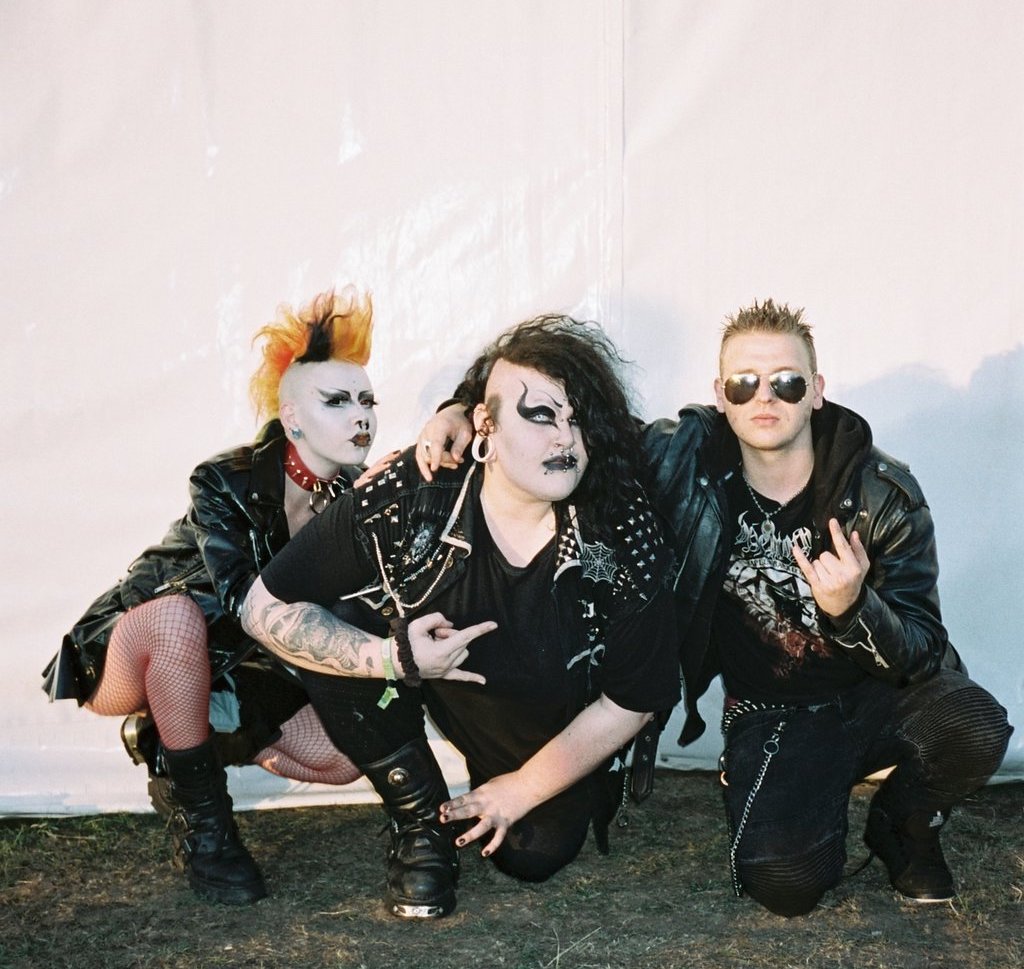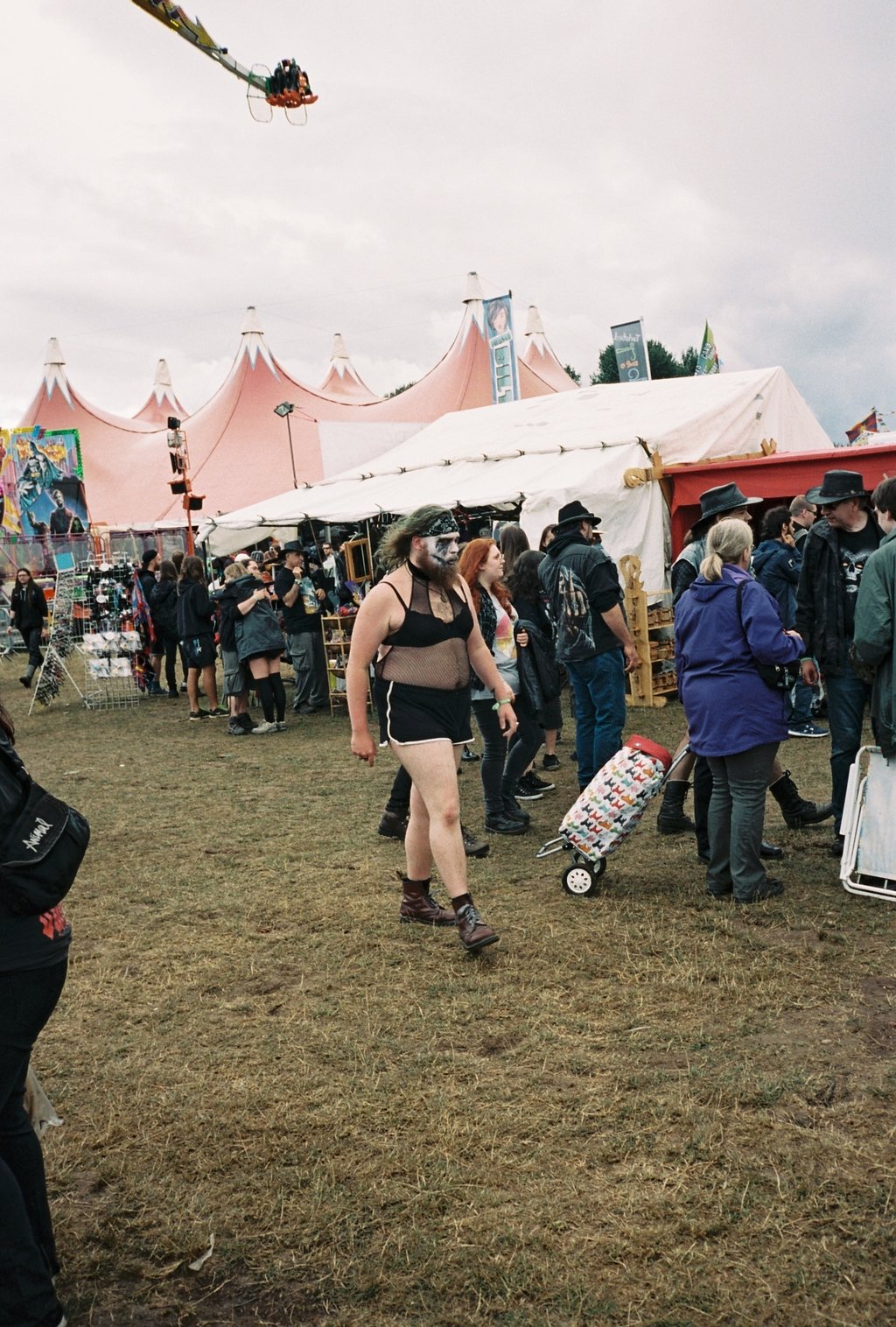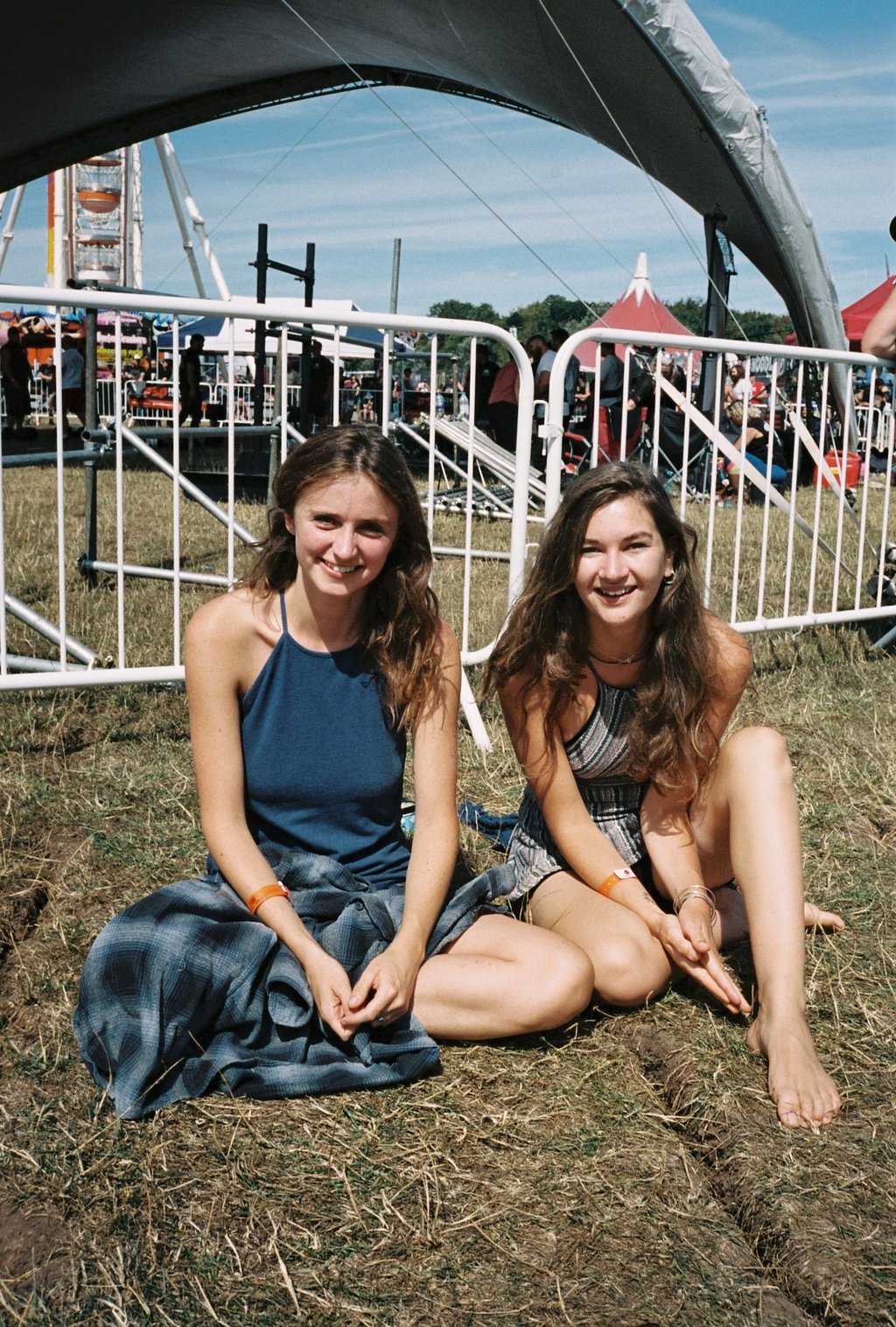Contemporary music fans are fickle creatures. As fast as they’re birthed, genres can become gravestones; just look at chillwave, witch house, freak folk, dance-punk, electroclash and vaporwave. But as new genres are gobbled up and zeitgeists created – from Soundcloud rap and drill to PC Music and avant-pop – there’s one that never seems to disappear: metal.
For some, a “metal phase” is merely a teenage rite of passage, much like bad hair and subsisting entirely on pint cans of Monster Energy. The music manages to capture all the pent-up aggression, alienation and bewilderment one can feel going through puberty, and project it back out again via screeching guttural vocals, building-shaking riffs, gut-churning bass lines and explosive drums. It also comes with the added sweetener of massively irritating strict or overbearing parents.
Videos by VICE
For many others, though, it’s a one-way ticket; a lifelong membership to the pit.

But how is metal looking in 2018? With hip-hop and R&B outselling guitar music for the first time in the US last year, are as many people still flocking to this club of unwashed battle jackets, indecipherable lyrics about Satanism and guitar solos longer than the latest Kanye album? To find out, I went along to Derbyshire’s Bloodstock, the biggest independent metal festival in the UK.

“I’ve been very undercover when it comes to metal,” says Anthony from Wolverhampton. “I was a secret metal fan for a long, long time. I’m black, and I felt like maybe I wouldn’t fit into the community, but I’ve now fully embraced [being a metalhead], and I’ve been welcomed. I work in a factory all week and metal is very therapeutic for me. The stresses of life in general go away; you get in a mosh pit, head bang it all out and none of it matters anymore.”

Matthew stalks slowly around the festival site in a latex skull mask, a leather jacket and leather gloves. He looks brilliantly creepy and menacing, a bit like a GTA character customised by a Misfits fan. Underneath the outfit, though, is a big Queen fan from West Yorkshire, who’s been a metalhead since the mid-1980s. “The community stays strong because it’s made up of people forming their own path,” he says of metal’s never-die spirit. “What I like about it is it gives you a sense of individualism, and that’s something to be proud of.”
“Metal is so fucking broad,” Reece from London tells me over a beer, resting up before entering the pit. “There’s something for everyone, and anyone can take part.”

He’s not wrong. While genres come and go in all music, metal truly is king of the sub-genre: grindcore, Christian metal, post-black metal, nu metal, rap metal, Viking metal, doom metal, symphonic death metal… the list goes on. This might create a ton of various strains for fans to explore, but does such a vast sub-sectioned family tree not create something of a division or hierarchy in the metal community? “I’d say it’s a very welcoming world,” says Reece. “The only time you ever experience hierarchy in the metal community is on the internet.”
Alice from Worcestershire agrees: “A few years ago I didn’t like metalheads, because they were dicks online. If you like a certain band, then someone will start saying really horrible things, and that put me off. Now that I’ve got to know people in real life, I realise that they don’t all match up with that online reputation.” Cameron from Norwich also feels that there’s a fundamental disconnect between online and real worlds when it comes to embracing people with mixed tastes. “With metal, it doesn’t matter if you’re wearing tracksuit bottoms… people often think you need to look metal to listen to metal, but that’s not the case,” he says. “If you’re in a field full of people that are on the same wavelength, that’s just the best feeling. It doesn’t matter what stupid label of metal you’re into.”

I soon bump into a man dressed as Jesus Christ, whose “sheltered and conservative” upbringing was disrupted when he had his mind opened by the movie Beavis and Butt-Head Do America, specifically the cactus trip sequence soundtracked by White Zombie. So what will Jesus be getting into later on? What are the party habits of metal fans? “It all depends who you’re hanging about with,” he says. “I’ve got mates here who all go mad with their party drugs, I’ve got other friends who just want to get drunk and go bin jousting; and I’ve got other friends who are here with their kids for the first time.”
For the uninitiated, bin jousting is exactly what it sounds like: as the night draws in and the inebriated masses flock back to the campsite, teams assemble and grab two of those huge four-wheeled recycling bins. One person climbs on top as their fellow team members get ready to push. “Unleash hell!” is screamed out and the two teams ram the bins full pelt into each other. If both people still remain on top of the bins, they then wrestle until only one remains, like a sort of drunken sumo wrestling, with more clothes and less dignity.

While people nurse sore heads and bin-related bruises the following day, and as Texan thrash metal band Power Trip manage to get a wall of death going just after breakfast, I speak to attendees about where metal is going and what’s exciting right now. The response generally brings a lot of pauses, thinking faces and “don’t know” answers. Mike from London tells me that new strands of groove metal is where it’s at, but the overall feeling is that while there are plenty new bands and sub-genres to delve further into, maybe things are becoming more disparate and the next cross-genre cultural explosion isn’t quite around the corner just yet. “There’s not enough new metal bands that are getting big,” June tells me. “I can’t see who is going to replace the big names as they die off. I don’t think you’re going to see any newer bands selling out stadiums like Iron Maiden do.”

Sisters Kirsty and Millie also worry that perhaps the new bands aren’t reaching the same heights as their forebears. “There’s exciting new bands, but not as many as there used to be,” says Kirsty. “When I was a teenager at school, nu metal happened, and that was a platform to then get into more metal. There’s nothing like that anymore; there’s no bridge to the heavier stuff. Those bands were a vehicle to me.”
How about the recent trend of the metal aesthetic being adopted by rappers and pop-stars – is there room there for a crossover and a future wave of nu-rap metal? “I don’t think so,” says Rob. “I think that’s just a fashion thing; they’ll soon get bored and move on from that. The worlds of Justin Bieber and [French metal band] Gojira aren’t likely to collide anytime soon.”

While the passion and love for metal is clearly far from dying, one recurring theme when interviewing people is tales of vanishing metal scenes back home. From Hull to Wakefield and Stoke to Suffolk, people talk about club nights and metal bars closing or scenes fading away. They say encroaching gentrification has spiked rent, meaning bars with small but loyal followings can no longer survive. In other instances, the interest simply seems to be dissipating. The snakebite-fuelled rock and metal nights are dwindling, Kirsty tells me: “New students coming to university don’t want metal nights. All those sorts of nights have died a death.”

Entering the world of metal might have once been considered an act of rebellion, a defiant stance against societal and musical conventions, but for many today it seems as much of an escape from the extremes of the real world as anything. Watching Judas Priest on stage gyrating around in sparkly outfits to glam-tinged riffs, it seems almost unfathomable that they were once considered a band so dangerous that they were taken to trial for influencing a teenage suicide through alleged subliminal messages on one of their records. It’s a testament to the long history of hysteria and sensationalism that metal has drawn over the years.
The more people I speak to, the more words like “family” and “community” reappear; you’d almost become suspicious of this cult-like response if the reality of those words wasn’t so apparent here. While metal is not some sort of all-inclusive golden utopia by any means – it has ongoing issues with racism and sexism in certain areas of the genre – the sense of community at this UK festival is evident. It’s clear from the 50-plus people I speak with, and it’s potently clear when you look up at the second biggest stage at the festival and it’s not sponsored by a beer or a brand, but named in tribute to Sophie Lancaster, the young woman who was tragically murdered for being the sort of person who looked like she might attend such a festival.

The overwhelming feeling plucked from Bloodstock, about metal’s longevity and indestructibility through ever-changing times, seems to be because the scene is bigger than just the music. It will survive times of popularity and disdain equally because it represents something that will outlive trends; for every new craze, there will be new people who feel ostracised by it.
“For someone that suffers from severe anxiety, this is one of the most blessed places to be,” a young woman called Kiere tells me. “The people here are amazing and openminded. It doesn’t matter how nervous you are; people here will accept you. A lot of people, like me, have mental health issues, and people are both understanding of that and able to look past it. Last year I came for the first time, and I was so worried and anxious and nervous about coming. You soon realise that you’re not alone here.”
@DanielDylanWray / alexandermcluckie.com
See more photos from Bloodstock below:









More
From VICE
-

(Photo by zabelin / Getty Images) -

Collage by VICE -

Screenshots: Warner Bros. Interactive Entertainment, Deep Silver, Epic Games Publishing

